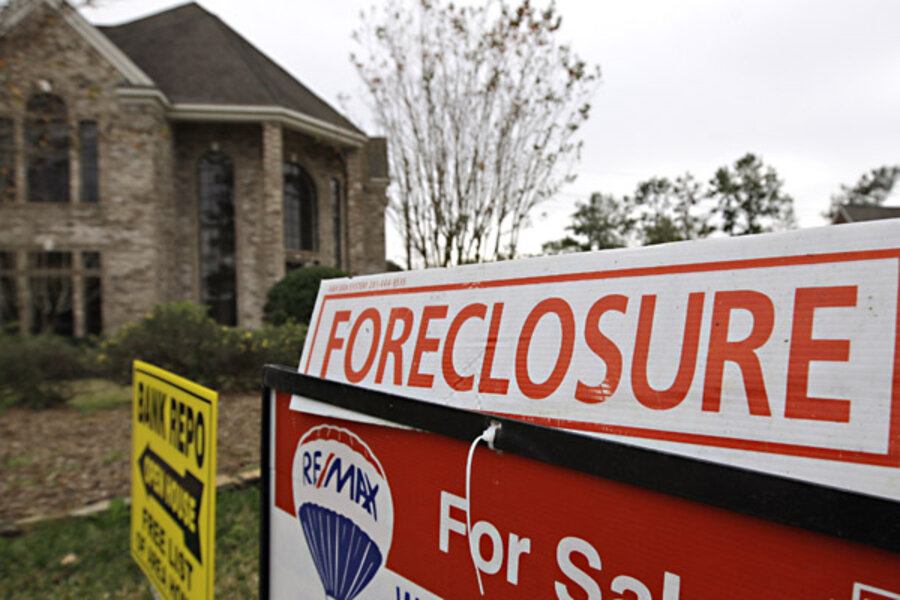Serious debt problems will continue, experts say
Loading...
Housingwire reported Thursday that bank risk managers still believe that excessive levels of mortgage debt, student loan debt and credit-card debt are still a serious risk.
FICO drew that conclusion from a fourth-quarter survey of bank risk professionals conducted by the Professional Risk Managers’ International Association.
Of those surveyed, 47% of risk managers say they expect mortgage delinquencies to rise, while 13% believe delinquencies will fall.
FICO says that’s more pessimistic when comparing 4Q survey results to the previous quarter.
Student debt also remains a concern, with education loan debt now exceeding credit card debt nationwide.
…
Evidence is mounting that student loans could be the next trouble spot for lenders,” said Dr. Andrew Jennings, chief analytics officer at FICO.
In short, risk managers are significantly more pessimistic now than they were last quarter. And for good reason. Over the past 10 to 15 years, total debt outstanding in the US has grown as a much faster pace than population, and little has been done to deal with the debt in spite of widespread unemployment, flat personal income, and declining collateral values.
According to this article in the Atlantic Monthly, student loan debt has grown more than 500 percent since 1999. Over a similar period, from 1998 to 2008, household credit-market debt has grown 140 percent. During this period, the US population grew about 10 percent. A similar curve can be observed for mortgage debt as well.
This graph shows that overall debt loads have come down by 5 percent since the financial crisis in 2008. While this is a rare case of total debt actually decreasing, the 5 percent decline is hardly a game-saving drop in the face of debt loads that nearly grew at exponential rates during the height of the bubble.
Some economists have made a big deal out the mild increase in the savings rate. This, however, does not show any big improvements either. The personal saving rate, at 3.5 percent during November, was tied at the lowest level seen since Janaury 2008. There was indeed a period following the initial crisis of late 2008 during which the saving rate hit 7.1 percent (during May 2009), but it has since steadily declined and has been below 4 percent for the past three quarters. This is likely as a result of ongoing efforts, through easy money policies, to keep the consumers spending.
And has it worked? Following a post-2008 drop that was similar to the drops in mortgage and credit market debt, consumer debt has been heading back up since the third quarter of 2010. Consumer debt is now about 5 percent below peak levels, following the initial drop, but has grown at about 3 times the rate of population over the past decade. The feds have managed to get consumer debt back up over the past 18 months or so. Has this increased spending been the result of increased employment and wages? Clearly not, since there are still at least 9 million unemployed Americans, and probably more.
Many of those continue to make payments on mortgages, credit card bills and student loans. How much longer this can continue in the fact of ongoing unemployment, underemployment, and underwater real estate remains to be seen, but it’s not difficult to see why the bank risk professionals suspect that more defaults may be on the horizon.
The economy will fix itself through a long and unpleasant period of deleveraging, but that appears to still be in the very early stages. Ongoing government interventions such as the homebuyer tax credits and continued efforts to push down interest rates continue to discourage saving and capital accumulation.
The one place we have seen a fair amount of deleveraging is in the mortgage markets as homeowners default, foreclose, and walk away, but the inventory there continues to be substantial, and declines in mortgage delinquencies may have stalled. During the 3rd Q of 2011, the percent of mortgage loans in foreclosure, according to the Mortgage Bankers Association, was flat from the second quarter, and it was up from the 3rd quarter of 2010. 4.3 percent of mortgage loans were in foreclosure during the 3rd Q of 2010, but 4.4 percent of them were in foreclosure during the same period this year. The overall trend is downward, but at a very slow pace.
Since one can’t get out of student debt through bankruptcy, and since many households use credit cards to balance household budgets, we could be looking at many years before present consumers begin to engage in some serious deleveraging of household debt. We certainly don’t seem to have seen much of it yet.





